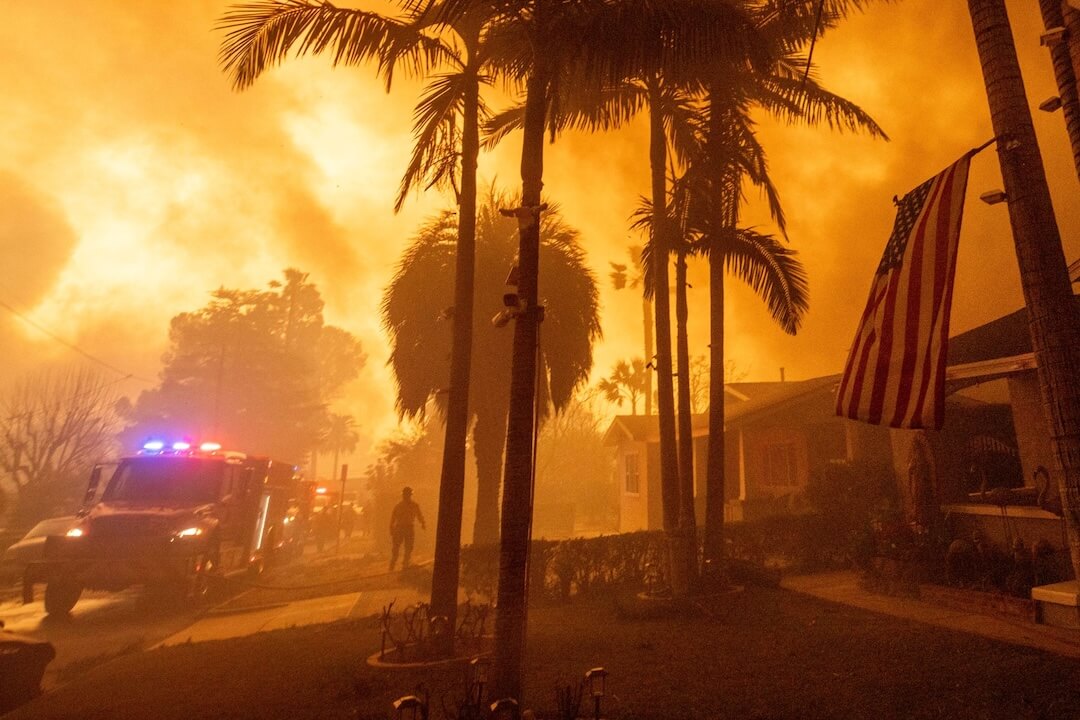 Covering COVID-19 is a daily Poynter briefing about journalism and coronavirus, written by senior faculty Al Tompkins. Sign up here to have it delivered to your inbox every weekday morning.
Covering COVID-19 is a daily Poynter briefing about journalism and coronavirus, written by senior faculty Al Tompkins. Sign up here to have it delivered to your inbox every weekday morning.
Fruit and veggie seeds are a hot item
Walmart, Target and Lowes all report. Americans are buying fruit and vegetable seeds and seedlings like never before. It is even causing a backlog of seed orders. Sort of like toilet paper, the seed companies said they have plenty of seeds, they just can’t fill orders fast enough.
On Walmart’s site virtually all vegetable and fruit seeds are out of stock. A Walmart spokeswoman told MarketWatch that fruit and vegetable seeds in addition to the four items in this story (fitness equipment, baking yeast, booze and video game consoles) are “all in high demand and we are working to replenish.”
MarketWatch also found:
Lowe’s online seed inventory varies by location and customers can also purchase seeds in-stores. “We continue to see customers engage in spring projects,” a company spokesman told MarketWatch. “One of the emerging projects has been planting seeds for at-home fruit and vegetable gardens.”
Like Lowe’s, Home Depot’s online inventory is also based on location. Almost all their seeds listed online state that “delivery is unavailable.” A company spokeswoman declined to comment on demand for seeds.
Go to Amazon and you will find they are also low on supplies for a lot of the most common food seeds.
Johnny’s Seeds said it has a good supply but it is slower in packing orders than normal because of COVID-19 precautions, so it is only currently filling commercial orders.
So that you are aware, the entire seed industry is in the same boat. Some of our good friends and competitors in the industry have stopped taking orders altogether, and most others are experiencing shipping delays, some up to 6 weeks. We suspect that this is in part what is driving our order volume even higher now. We wish we could tell you that we are catching up, but we are not.
We are getting 80% of orders out in 10 business days or less, and we are acutely aware of every single order that is over that time frame. Many of those very late orders are held up by a shortage in mostly packaging materials. Our bulk seed inventory continues to be very strong overall.
NPR interviewed the head of the Burpee Seed Company, one of the big players in the seed industry, which added perspective:
“We’re being flooded with vegetable orders,” says George Ball, executive chairman of the Burpee Seed Company, based in Warminster, Pennsylvania.
Ball says he has noticed spikes in seed sales during bad times: the stock market crash of 1987, the dotcom bubble burst of 2000, and he remembers the two oil crises of the 1970s from his childhood. But he says he has not seen a spike this large and widespread.
The rise of victory gardens
Miracle-Gro fertilizer is urging people to plant “victory gardens” like our great grandparents did after the 1919 National War Garden Commission urged everyone to plant gardens.
“CBS Sunday Morning” produced a lovely story on the resurgence of victory gardens. The gardens began as an idea during World War I, but by World War II, they were so plentiful they produced 40% of the nation’s vegetables in the 1940s, the story said.
For those would-be victory gardeners who kill plants and only know defeat, Oregon State University is offering its Master Gardener classes for free.
[the_ad id=”667826″]
Food banks are getting slammed with demand
No wonder people are turning to grow their own food. Lots of foodbanks distribute midweek, and today may be even more demanding than last week.
Did you see the San Antonio Express-News’ photo of the massive lines of cars waiting for food at the food bank there? 10,000 people showed up.
“It was a rough one today,” San Antonio Food Bank president and CEO Eric Cooper told the paper after the largest single-day distribution in the nonprofit’s 40-year history. “We have never executed on as large of a demand as we are now.”
Some people lined up the night before the distribution began.
KIRO-TV in Seattle reported that not only is demand high, but food banks can’t find the supplies they need.
“We are down to our last pallet of peanut butter,” said Rebecca Larsen, director of Helping Hands Food Bank in Skagit County, which supplies food to neighboring food banks including Bellingham’s, and is on pace to serve a staggering 200 families.
“What’s scaring me is rice. We are running out, and no one will sell it to me,” she said.
Feeding America, a network of food banks around the country, usually gets unused food donations from grocery stores. But when stores started having trouble stocking their own shelves, the food banks lost about a third of the donations they usually get from retail stores.
The Guardian reported demand at food banks has increased by eight times in some areas in the U.S. About a third of the people that The Guardian interviewed had never before needed food assistance.
I can tell you that the food bank where my wife volunteers here in St. Petersburg, Florida, saw something similar. About a fourth of the people who showed up last week said they had just lost their job and had never before accepted donated food.
The need knows no geography or population size. Look at this video from Duquesne, Pennsylvania, captured by Pittsburgh Post-Gazette photographer Andrew Rush:
Hundreds of cars wait to receive food from the Greater Community Food Bank in Duquesne. Collection begins at noon. @PghFoodBank @PittsburghPG pic.twitter.com/94YFaO7dqX
— Andrew Rush (@andrewrush) March 30, 2020
Even with waiting lines of needy people stretching for miles, many food banks have only a fraction of the normal number of volunteers to stack donations and load them into cars.
[the_ad id=”667872″]
Farmers are losing crops and milk
At the same moment people are lining up for hours for food and others are beginning to grow their own, farmers cannot harvest the crops they invested a whole season into planting and growing. The Miami Herald reported:
A tractor with a 35-foot blade mowed down one million pounds of green beans ready to be picked at R.C. Hatton’s Pahokee fields.
Those crops should have been going to South Florida’s restaurants, cruise ships, school cafeterias, airlines and even theme parks.
Instead, they are going into the ground.
“And I’ve got another one million I can’t harvest that’s going down in the next three days,” R.C. Hatton’s president Paul Allen said.
The story said farmers should be shipping the produce to restaurants and hotels and cruise ships. They donate some to food banks, but the charities cannot handle even close to what the farmers have to dispose of.
For example, what do you do with 1,300 acres of Florida tomatoes that are ripe and ready and won’t wait for logistics to get worked out for a charity somewhere to pick them up and hand them out?
Plenty of places have a glut of food with nowhere to send it. NPR looked into the issue:
The situation is especially dire for Florida’s tomato growers, who sell 80% of their production to restaurants and other food service companies, rather than to supermarkets. “Think about all the sandwiches that people eat at lunch when they go out. Burgers, or salads at restaurants,” says Michael Schadler, from the Florida Tomato Exchange, which represents some of the state’s largest growers. “Many of those food service items have tomatoes.”
The dairy business was in trouble before COVID-19. Since January, milk prices have decreased between 26 and 36%, according to the American Farm Bureau Federation.
In Wisconsin, dairy farmers were just barely recovering from a trade war with China and a declining American appetite for milk, and have now been gut-punched by COVID-19. The No. 1 key market for milk is public school cafeterias. With schools closed, that market evaporated almost overnight. And while you can shut off a market, you can’t “shut off” a cow. Springtime is when cows produce the most milk, in what dairy farmers call “the spring flush,” because calves are mostly born in the springtime.
Modern Farmer told the story of a New York state dairy farmer who could not find a place to sell his milk, so he flushed 250,000 pounds of it down the drain. He said he and two dozen of his dairy farming neighbors expected to dump more than a million pounds of milk because of COVID-19.
Students are paying for empty apartments
I have spoken with hundreds of college students by teaching virtual classes in the past few weeks and so many have told me that they have lost their jobs and their summer internships.
There is another story I am hearing over and over. College students who were on spring break were told that spring break was being extended. Then they were told that the rest of the semester would be virtual. One Michigan State student said he is stuck at home in Washington, D.C., and all of his possessions are in Lansing, Michigan. He is paying for an apartment there that he cannot use and he can’t travel there to collect his belongings. The Detroit Free Press profiled other students just like him who are paying for empty apartments and houses.
There does not seem to be much that schools can do. Students who live(d) in student housing on campus got a partial refund. But off-campus students are out of luck. The Free Press talked with 18 college students all across Michigan:
None of those students said their landlords were giving breaks on rent or ending leases early. A handful of students said they had been told late fees on payments would be waived. Ten of them said they had received emails or letters from landlords reminding them rent was due.
A recent survey found 90% of students said they worried about passing the coronavirus to medically vulnerable people around them and the same percentage said they are worried about the economy. The Pew Research Center found that young adults are also the most at risk for losing their jobs.
Based on the demographics of workers in higher-risk industries, young people in particular are set to be disproportionately affected by virus-related layoffs. Among the 19.3 million workers ages 16 to 24 in the economy overall, 9.2 million, or nearly half, are employed in service-sector establishments. Younger workers make up 24% of employment in higher-risk industries overall, and many establishments in these industries are facing a high likelihood of closure in areas with more severe COVID-19 outbreaks.
[the_ad id=”667878″]
The way we work now
 We’ll be back tomorrow with a new edition of Covering COVID-19. Sign up here to get it delivered right to your inbox.
We’ll be back tomorrow with a new edition of Covering COVID-19. Sign up here to get it delivered right to your inbox.
Al Tompkins is senior faculty at Poynter. He can be reached at atompkins@poynter.org or on Twitter, @atompkins.








